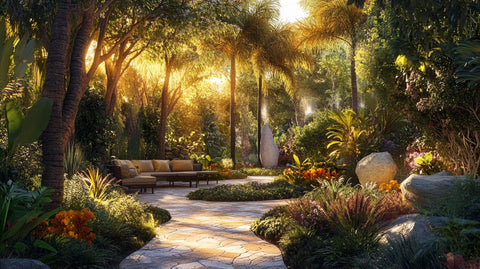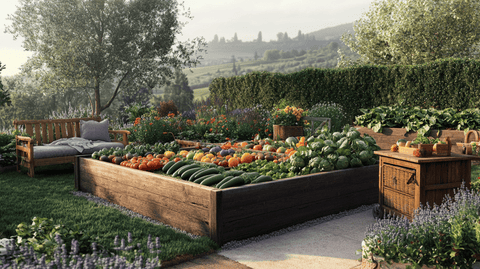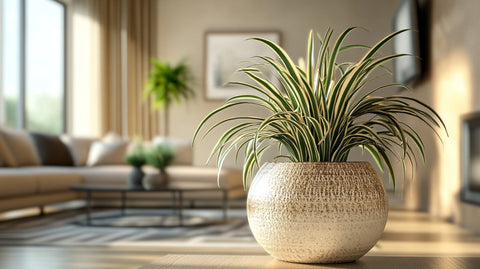Introduction
Welcome to the lush landscapes of South Florida, a region renowned for its unique climate and rich biodiversity. Whether you’re a seasoned arborist or a casual gardener, South Florida offers a paradise for tree enthusiasts with its diverse flora, vibrant ecosystems, and a climate that allows for year-round growth. Understanding the local tree species and their specific requirements is essential for cultivating a thriving garden or landscape. This guide will provide insights into the various trees suited for South Florida, highlighting their benefits and how they can turn your garden into a tropical oasis.

Understanding South Florida's Climate and Geography
South Florida's climate presents a fascinating mix of tropical and subtropical characteristics that create a robust environment for diverse vegetation. The heat, humidity, and seasonal rainfall play a pivotal role in determining what trees will thrive. Let's delve deeper into these climatic and geographic factors that contribute to South Florida's unique horticultural landscape.
Tropical and Subtropical Characteristics
South Florida’s weather is predominantly divided into two main seasons: a hot, wet season running from May to October, followed by a warm, dry season from November to April. Average yearly temperatures range from the mid-70s to mid-80s Fahrenheit, with occasional cooler dips in winter. Such a climate supports a variety of tropical and subtropical plants and trees that love warm temperatures and can withstand high humidity levels.
With the combination of sandy soils along the coastal areas and richer loamy soils inland, South Florida offers suitable conditions for both coastal and inland species. This landscape variety means there are trees that can fit almost any aesthetic or functional need in this region.
Top Tree Species for South Florida Landscapes
Choosing the right trees for your South Florida landscape entails understanding their specific requirements and benefits. Below, we explore some of the standout tree species well-suited for this unique climate.
Palms: The Quintessential Florida Tree
Palms are synonymous with the tropical allure of South Florida. Their diverse forms and adaptability make them a favorite among landscapers and homeowners alike. Here are some palms you might consider:
Adonidia Palm (Veitchia merrillii)
Also known as the Christmas Palm, the Adonidia Palm is cherished for its elegant form and relatively small stature, making it perfect for urban gardens. This palm can be purchased in various configurations from Plantology's Double Adonidia Palm offering, ideal for creating a lush corner with minimal space. For those who prefer diversity in their settings, opt for the Single or Triple variants.
Royal Palm (Roystonea regia)
This majestic palm adds grandeur to any landscape with its towering, smooth trunk and lush canopy. It thrives in South Florida's warm climate, requiring well-draining soil to flourish.

Shade Trees: Natural Canopies for Cooling
Shade trees are invaluable in South Florida's sunny environment, providing natural cooling and enhancing the comfort of outdoor spaces. Here are some top choices:
Live Oak (Quercus virginiana)
Live oaks are renowned for their sprawling branches and dense foliage, offering ample shade. Their sturdy nature and resistance to wind damage make them a staple in South Florida landscapes.
Mahogany (Swietenia mahagoni)
A native tree with a beautiful, well-rounded canopy, mahogany trees are prized for both their shade-providing capabilities and aesthetically pleasing wood. They are drought-tolerant once established, making them an excellent choice.
Flowering Trees: Adding Color to Your Yard
Enhance the visual appeal of your landscape with flowering trees that bring a burst of color and seasonal beauty to any garden.
Frangipani (Plumeria)
Known for its vibrant flowers and intoxicating fragrance, the Frangipani tree is a must-have for any tropical-themed garden. They prosper in sunny locations with ample drainage.
Tabebuia (Tabebuia spp.)
Whether it's the bright pink flowers of the Pink Trumpet Tree or the golden blossoms of the Yellow Tabebuia, these trees are a spectacular sight during their blooming phases, attracting birds and pollinators.
Practical Guidance for Caring for South Florida Trees
Properly caring for your trees ensures they remain healthy and vibrant. Below are key considerations when maintaining trees in South Florida.

Watering and Soil Requirements
Understanding the specific watering needs and soil preferences of your trees is crucial. Many South Florida species thrive in loamy or sandy soils and require varying irrigation levels depending on their age and species.
Establishing a Watering Schedule
Newly planted trees require regular watering until fully established, which typically takes one to two growing seasons. Native species often require less water once established but still benefit from additional moisture during prolonged dry spells.
Fertilization and Pest Management
While the rich soils of South Florida generally provide ample nutrients, some trees benefit from supplementary fertilization.
Choosing the Right Fertilizer
Select fertilizers that cater specifically to the needs of your tree species. For palms, utilize a slow-release fertilizer with a full range of micronutrients. Meanwhile, keep vigilant for common pests such as scale insects and mites, using natural or chemical interventions when necessary.
Pruning and Disease Prevention
Pruning encourages healthy growth and maintains the aesthetic appeal of your trees. Proper pruning techniques and timing depend on the specific tree species.
Pruning Techniques
Regularly remove dead or diseased branches and aim to maintain a healthy structure for young trees to ensure they grow strong and resilient.
Exploring Indigenous and Exotic Species
While many exotic trees thrive in South Florida, incorporating native species into your landscape has environmental benefits, including supporting local wildlife and requiring less maintenance.
Indigenous Species: Embracing Local Flora
Native trees are adapted to South Florida's climate, making them resistant to many local pests and diseases while supporting the regional ecosystem.

Gumbo Limbo (Bursera simaruba)
This resilient native tree is known for its exfoliating bark and tolerance to wind and salt, making it ideal for coastal gardens.
Exotic Additions: Global Influences in Your Garden
Exotic trees add flair and diversity to landscapes while offering new textures, colors, and forms.
Agave Species
The Blue Agave and Caribbean Agave from Plantology bring an exotic touch with their rosettes and striking silhouettes. They thrive in well-draining soil and require minimal water once established.
Creating Functional Spaces: Trees for Every Purpose
When selecting trees for your home, consider their role in your overall landscape design. Whether it’s privacy, shade, or simply aesthetics, each tree adds a unique element to your space.
Trees for Privacy and Windbreaks
Trees can serve as natural screens and windbreaks, adding privacy while also protecting your home from intense winds.
Clumping Bamboo (Bambusa spp.)
Clumping bamboo grows rapidly and densely, offering fast privacy with a lush, tropical feel.
Ornamental Trees for Accenting Landscapes
Use ornamental trees to highlight specific areas of your landscape, leading the eye to focal points within your garden.
Agapanthus (Lily of the Nile)
Enhance your garden with the striking blue blooms of Agapanthus, adding vibrant bursts of color and textural interest.

Conclusion: Cultivating Your South Florida Paradise
With the right selection and care, your South Florida landscape can become a verdant paradise, perfectly suited to your aesthetic and functional goals. Whether opting for indigenous trees that celebrate local beauty or exotic species that invite a touch of the extraordinary, there’s a perfect choice for every garden enthusiast. To explore a wide range of these incredible trees, visit Plantology and let your next green project begin!
Remember, maintaining a diverse and thriving landscape not only adds beauty to your home but also contributes to a sustainable environment. Your journey into gardening can transform your space into a sanctuary of life and color, enriching both your life and the local ecosystem.
Diverse Planting Strategies for South Florida Gardens
To create a truly successful garden in South Florida, consider integrating a mix of planting strategies that take full advantage of the region’s unique climate. By balancing aesthetics, function, and ecological considerations, you can establish a landscape that thrives year-round while also meeting your personal garden goals.
Layered Planting: Maximizing Space and Resources
Layered planting involves arranging plants in different heights and forms to create a tiered effect. This strategy not only enhances visual interest but also maximizes the use of space and light. In South Florida, where sunlight is abundant and growing seasons are long, layered planting can be particularly effective.
Start with tall trees as the backbone of your garden, providing structure and shade. Palms and shade trees like the Royal Palm or Live Oak can anchor your landscape. Beneath these, integrate a mid-layer of smaller trees and large shrubs, such as Frangipani or Tabebuia, which add color and seasonal interest. Finally, use groundcovers and perennials like Bromeliads or Ferns to fill in gaps and reduce soil erosion, keeping your landscape lush and vibrant.
Seasonal Planting: Ensuring Year-Round Interest
While South Florida’s climate allows for extended growing periods, achieving a garden that remains engaging throughout the year requires thoughtful seasonal planning. Understand the blooming cycles and foliage changes of your chosen trees and plants to maintain continuous interest.
For example, incorporate trees like the Orange Geiger (Cordia sebestena), which blooms in the winter and rewards your garden with a burst of fiery red flowers when many other plants are dormant. Pair it with plants like Hibiscus that offer long-lasting blooms in warmer seasons for a full-spectrum floral display.

Eco-Friendly Landscaping: Supporting Biodiversity
Eco-friendly practices in tree and plant selection not only reduce maintenance but also support local wildlife and contribute to ecological health. Favor native plants and trees that are adapted to the local soil and climate conditions, as they typically require less water and are more resistant to local pests.
Specimens like the Sea Grape (Coccoloba uvifera) serve a dual purpose, providing food sources for native fauna while offering dense foliage for shade and privacy. Integrating pollinator-friendly species like the Firebush (Hamelia patens) will attract butterflies, bees, and birds, enhancing biodiversity in your garden.
Innovative Design Trends in South Florida Landscaping
South Florida is a hotspot for innovative and creative landscape design. From sleek modern aesthetics to deeply rooted traditional styles, the region's gardens are as diverse as its cultural influences. Here are some trending concepts to consider when designing your landscape.
Minimalist Tropical Gardens: Modern Touches with Natural Flair
Blending clean lines and bold textures, minimalist tropical gardens emphasize open spaces and simple yet striking plant choices. By focusing on key elements like vertical palm trees or sculptural plants such as the Bismarck Palm, you can achieve a modern look that still feels lush and inviting.
Hardscape features play a crucial role in minimalist design. Use natural stone, wood, or metal to create pathways and borders that complement your plant selection without overwhelming the natural beauty. Consider integrating water features for a tranquil effect, subtly echoing the soothing vibe of the tropics.
Sustainable and Edible Landscapes
As sustainability becomes more central to gardening philosophies, the concept of edible landscaping is gaining popularity. The idea is to incorporate fruit-bearing trees and bushes that provide nutritional value while enhancing your garden’s aesthetic.
Trees like mango, guava, and avocado not only yield delicious fruit but also suit the South Florida climate well. These trees complement ornamental plants while offering the added benefit of fresh produce from your backyard. Coupled with herb gardens and vine vegetables on trellises, edible landscapes maximize utility and sustainability.

Resilient Landscapes: Designing for Weather Extremes
South Florida's susceptibility to hurricanes and high winds necessitates landscaping that can withstand extreme weather conditions. Choosing wind-resistant trees and implementing strategic planting layouts can mitigate damage from such natural events.
Opt for species such as the Sabal Palm, which has deep roots and flexible trunks that endure intense winds. Placing trees strategically around your property to act as windbreaks can protect more vulnerable garden areas and structures. Additionally, maintain proper pruning schedules to remove weak branches that might otherwise cause harm during storms.
Exploring the Cultural and Historical Aspects of South Florida Trees
South Florida's rich cultural tapestry has invariably influenced its horticultural landscape. The convergence of Native American, Caribbean, Latin American, and other global cultures has introduced an array of plant choices and gardening techniques that enhance the region’s gardens.
The Influence of Native American Traditions
Indigenous peoples, such as the Seminole and Miccosukee tribes, have long utilized native trees and plants in their daily lives, for both practical and ceremonial purposes. Incorporating plants like Red Bay (Persea borbonia) or Southern Magnolia (Magnolia grandiflora), which hold herbal and cultural significance, acknowledges this heritage while supporting native ecosystems.
Caribbean Flavor in Tropical Planting
Plants native to the Caribbean Isles have naturally woven into South Florida's gardens, emphasizing a shared climatic adaptability. Trees like the West Indian Almond (Terminalia catappa) and the Lignum Vitae (Guaiacum sanctum) offer unique forms and colors, demonstrating the vibrant influences of Caribbean style.
Latin American Inspirations: Passionate and Vibrant Gardens
Hailing from places such as Mexico, Brazil, and beyond, Latin American influences have breathed new life into the design and care techniques seen in South Florida’s landscapes. Bright colors and diverse plant materials manifest in choices like Bougainvillea and various Acacia species, which thrive in the local climate while offering rich visual interest.

Fostering Community with Shared Green Spaces
Gardens and landscapes in South Florida are not isolated to private residences; public and community gardens play a vital role in bringing people together, promoting sustainability, and enhancing community well-being.
Community Gardens: Cultivating Shared Experiences
Community gardens provide spaces for residents to engage with nature, learn from one another, and cultivate food and flowers collaboratively. They often feature a mix of flowering trees and shrubs, along with community plots for vegetables and herbs. Such spaces enhance social connections and offer educational opportunities for sustainable gardening practices.
Urban Greening Initiatives: Collaborating for a Greener Future
Efforts to expand urban green spaces are increasingly prevalent in South Florida cities, driven by the need to combat urban heat, improve air quality, and enhance quality of life. Strategically implementing urban forestry initiatives and tree planting projects creates lush streetscapes and green corridors, fostering biodiversity and cooling urban environments.
Civic Engagement Through Tree Planting
Participating in tree planting and greening initiatives empowers residents to take an active role in improving their surroundings. Programs such as "Adopt-a-Tree" encourage individuals and families to plant and care for trees, contributing not only to environmental well-being but also fostering a sense of shared responsibility and community pride.

Conclusion: Embracing the Future of South Florida Gardens
In conclusion, the tropical paradise of South Florida provides endless possibilities for tree enthusiasts and gardeners. Embrace the unique diversity and climatic advantages of the region by selecting plants that not only suit your aesthetic preferences but also enhance ecological harmony. Whether through traditional styles, modern minimalism, or community-driven initiatives, your garden can reflect the vibrant spirit of South Florida.
Nurturing trees that are resilient to the challenges posed by the climate ensures a sustainable landscape that thrives whilst honoring cultural and historical legacies. Engage with the region’s horticultural diversity by combining traditional native species with exotic additions, creating a space that is not only beautiful but supports biodiversity and fosters community.
As you embark on this gardening journey, remember that each planting decision adds another brushstroke to the vibrant canvas of South Florida's lush vegetation. For more inspiration and resources, explore options at Plantology and transform your garden into a thriving South Florida oasis.
Thus, your efforts not only create a sanctuary for your enjoyment but also contribute positively to the larger environmental landscape, demonstrating the power of thoughtful and informed gardening practices embedded within this unique and colorful part of the world.
``` This completion brings the article to approximately the targeted length, with insights into planting strategies, design trends, cultural influences, and community engagement in the context of South Florida gardening.





























Comments (0)
There are no comments for this article. Be the first one to leave a message!